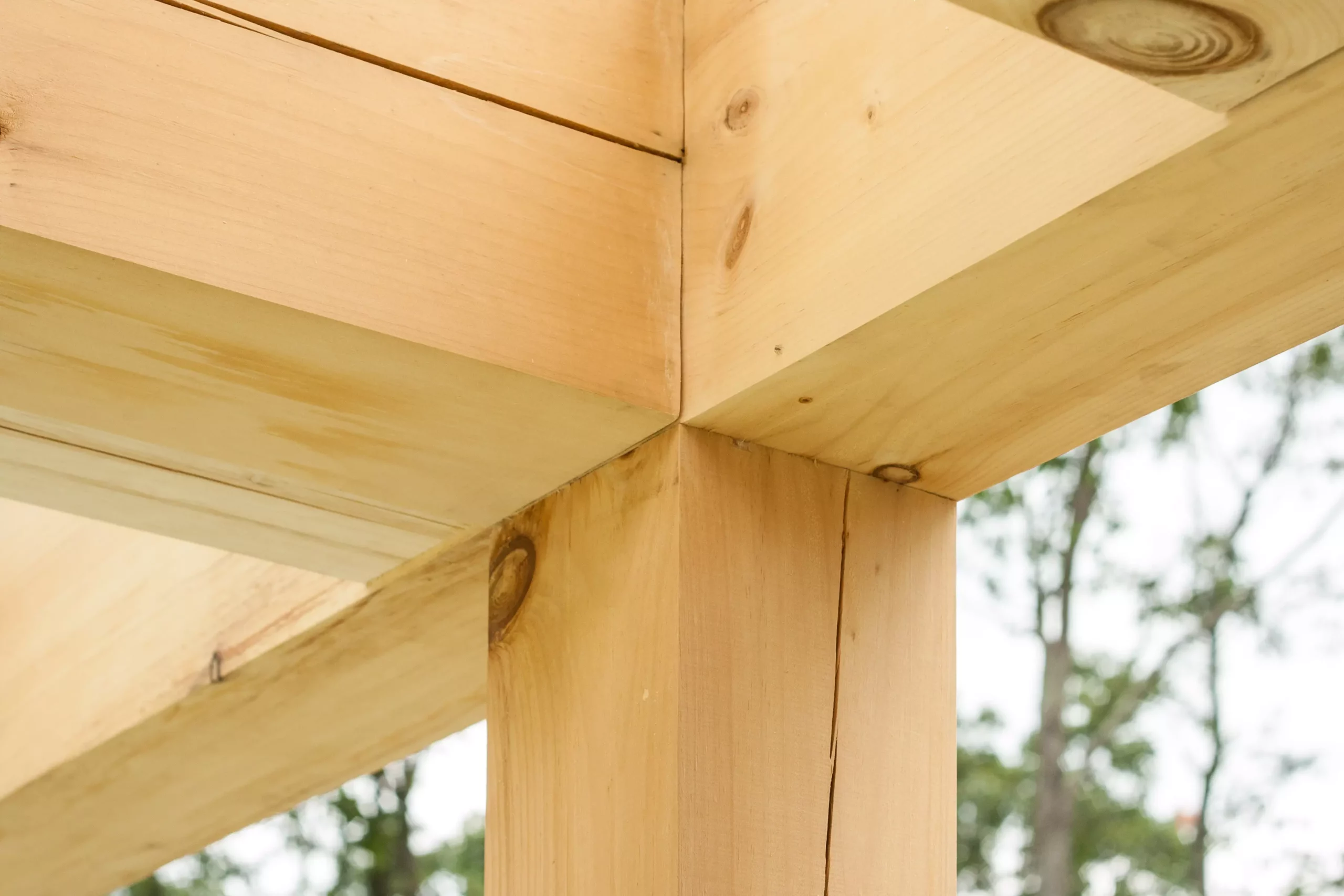Attention all aspiring homeowners and construction enthusiasts! Embark on a journey into the world of beam construction and learn how these structural heroes form the backbone of your dream St. Louis structures. This guide will equip you with the knowledge to confidently discuss your project with contractors and ensure a strong, durable foundation for your building dreams.
Beam Construction: The Backbone of Your Building Dreams
Ever wonder how buildings stand tall and strong? The secret lies in their beams! These horizontal structural elements bear the weight of the structure, transferring it to the supports and preventing collapses.
What Makes a Beam Tick?
Think of a beam like a bridge – it needs strength to handle the load and flexibility to bend slightly without breaking. The key lies in the chosen materials and their shapes.
The Material World
Different materials offer varying advantages in beam construction:
- Steel Beams: The heavy lifters of the construction world, known for their strength and durability. They are ideal for skyscrapers, bridges, and structures requiring immense load-bearing capacity.
- Timber Beams: Wood brings a natural warmth and charm to buildings, making timber beams popular in homes and smaller structures. Timber has been a construction staple for centuries and offers aesthetic appeal.
- Concrete Beams: These sturdy beams are naturally fire-resistant and excel at handling compression, making them ideal for buildings in earthquake-prone areas or structures requiring fire resistance.
- Composite Beams: Composite beams combine the strength of steel with the lightness of wood or concrete. This creates a super-beam capable of spanning greater distances with less material.
Supporting Roles: How Beams Carry the Load
The way a beam is supported significantly impacts its load-bearing capacity:
- Fixed Beams: Envision a beam firmly anchored at both ends, like a bookend. These beams offer superior strength and can manage heavy loads due to their secure attachment points.
- Simply Supported Beams: These beams rest freely on two supports, concentrating the load on those two points. They are simpler to install than fixed beams but may require additional considerations for load distribution.
- Overhanging Beams: An overhanging beam is anchored at one end and extends beyond the support, creating a cantilevered effect. Balconies and overhangs commonly utilize this beam type.
- Continuous Beams: Spanning across multiple supports, continuous beams distribute the load more evenly, allowing for longer spans and greater design flexibility.
Shape Matters: A Beam for Every Purpose
Beams come in various shapes and sizes, each optimized for specific purposes:
- Cantilever Beams: Anchored at one end and projecting outwards, cantilever beams are often used for balconies, overhangs, and diving boards, creating unique architectural elements.
- L-Beams: Shaped like a right angle, L-beams provide excellent stability in framing systems, making them essential for walls and roofs. Their shape allows for efficient load transfer and integration within a structure.
- I-Beams: I-beams maximize the strength-to-weight ratio, efficiently handling heavy loads with less material. Their shape is particularly advantageous for spanning large distances.
- T-Beams: Similar to I-beams, T-beams feature a flange on one side, making them perfect for supporting floors and roofs. Their shape provides the necessary strength and stability for these applications.
Beam Construction: A Fusion of Art and Engineering
Modern beam construction combines cutting-edge engineering with sustainability and aesthetics:
- Smart Designs: Sophisticated computer software analyzes loads, material behavior, and environmental factors to design beams optimized for strength and efficiency. This ensures safe and cost-effective building practices.
- Green Building: The beam industry embraces eco-friendly materials like recycled steel and bio-composites, reducing the environmental impact of construction. This shift towards sustainability aligns with the increasing demand for environmentally responsible building practices.
- Beams as Design Elements: Beams are no longer hidden structural components; they are becoming prominent architectural statements. Exposed timber beams add rustic charm, while sleek steel beams create a modern, industrial vibe.
What are the Different Types of Beams?
Beams exhibit diversity in their shapes, sizes, and materials, each type suited for specific applications.
The Material Difference:
- Timber Beams: Strong and lightweight, timber beams bring a natural aesthetic to buildings, making them popular for residential projects.
- Steel Beams: The titans of the beam world, steel beams, offer immense strength and durability, making them ideal for large-scale structures like bridges and skyscrapers.
- Concrete Beams: Highly resistant to compression, concrete beams are a preferred choice for foundations and columns. They also provide excellent fire resistance, enhancing building safety.
- Composite Beams: Combining the best of both worlds, composite beams leverage the strength of steel and the lightweight nature of materials like wood or concrete. This blend allows for greater spans and design flexibility.
Support Systems: How Beams Stay Upright:
- Fixed Beams: Fixed beams are secured at both ends, offering the highest load-bearing capacity due to their rigid support system.
- Simply Supported Beams: Resting freely on supports at each end, simply supported beams are easier to install but may require additional considerations for load distribution.
- Overhanging Beams: Extending beyond their support, overhanging beams create cantilevered structures, often seen in balconies or architectural overhangs.
- Continuous Beams: Spanning multiple supports, continuous beams efficiently distribute loads and are often used in applications requiring long, uninterrupted spans.
Choosing the Right Beam:
Engineers carefully evaluate these factors when selecting the optimal beam:
- Load: Heavier loads necessitate stronger beams with higher load-carrying capacity.
- Span: Longer spans require stronger beams to prevent sagging or structural failure.
- Materials and Cost: Material availability and cost-effectiveness play a significant role in beam selection.
- Building Requirements: Each building presents unique structural demands, and beam selection must align with these specific needs.
Understanding Beam Load Capacities: What You Need to Know
Load-carrying capacity is a beam’s ability to support weight without failing. Understanding this concept is crucial for architects, engineers, and DIY enthusiasts alike, ensuring safe and durable structures.
Factors Influencing Load-Carrying Capacity:
- Material: Each material possesses inherent strength characteristics. Steel is renowned for its high load-bearing capacity, while timber offers a balance of strength and weight.
- Size: Thicker, larger beams naturally handle greater loads than thinner, smaller beams. Dimensions play a crucial role in load distribution and overall strength.
- Support: The way a beam is supported greatly influences its load-carrying capacity. Fixed beams offer greater support and load-bearing capabilities compared to simply supported beams.
- Load Type: Concentrated loads, where weight is focused on a specific point, impact the beam differently than distributed loads spread across its length.
- Load Position: Similar to a diving board, a load positioned at the center of a beam exerts more stress than a weight closer to a support.
Why Load-Carrying Capacity Matters:
- Safety: Understanding load limits prevents structural failures, ensuring the safety of occupants and the building.
- Repairs: Knowing load capacity informs repair strategies, ensuring repairs are structurally sound and can handle the intended loads.
- Building Codes: Building codes incorporate load-carrying capacity as a safety standard, guaranteeing structures meet minimum safety requirements.
Choosing the Right Beam Materials: A Comprehensive Guide
Selecting the appropriate beam material is a crucial step in ensuring a building’s strength, safety, and durability. Factors like load requirements, aesthetics, and environmental conditions all play a part in choosing the right material.
Popular Beam Material Options:
1. Wood: The Classic Choice
- Pros: Budget-friendly, readily available, offers a timeless aesthetic, and is easy to work with on-site.
- Cons: Susceptible to moisture damage, pests, and fire if not treated correctly. Strength can vary significantly based on wood type and grade.
2. Steel: The Strong Silent Type
- Pros: Incredibly strong, fire-resistant, immune to pests and rot, and highly durable.
- Cons: Can be expensive, prone to rust if not properly coated, and conducts heat readily.
3. Engineered Lumber: The New Kid on the Block
- Pros: Stronger than traditional lumber, offers consistent dimensions, and is often more environmentally friendly.
- Cons: Can be pricier than regular lumber, and some types are susceptible to moisture damage.
4. Other Materials: For Special Cases
- Concrete: Extremely strong, fire-resistant, and resists compression well but is heavy and requires reinforcement.
- Aluminum: Lightweight and corrosion-resistant, suitable for specialized applications like awnings or canopies.
- Fiber-Reinforced Polymer (FRP): Strong, durable, weather-resistant, corrosion-resistant, and increasingly popular for its versatility.
Factors to Consider When Choosing Beam Materials:
- Load Requirements: The beam must support the intended dead and live loads safely.
- Span Length: Longer spans often require stronger materials or larger beam dimensions.
- Environmental Conditions: Consider exposure to moisture, extreme temperatures, or salty air when choosing a material.
- Budget: Balance structural needs with budget constraints.
- Aesthetics: Choose a material that complements the building’s design.
Choosing the right beam material is essential for a successful construction project. By carefully assessing project needs and considering these factors, you can ensure a strong, durable, and aesthetically pleasing structure. Remember to consult with experienced architects, structural engineers, and construction professionals to discuss your project needs for expert guidance.
For further exploration on construction materials and techniques, browse our comprehensive guides:
- Find the Perfect Santa Mugs: Year-Round Guide - July 6, 2025
- Find the Perfect Collectible Santa Figurines: A Guide - July 6, 2025
- Find the Perfect Santa Claus Toys: Holiday Gift Guide - July 6, 2025










